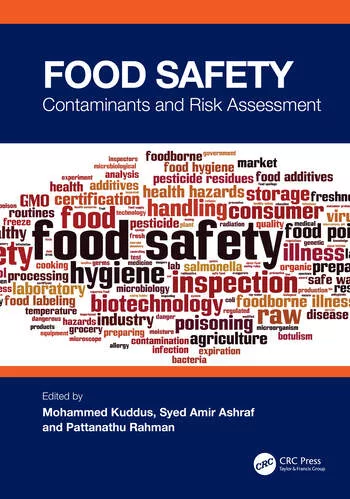Food Safety
Documentation is key to proving hazard control
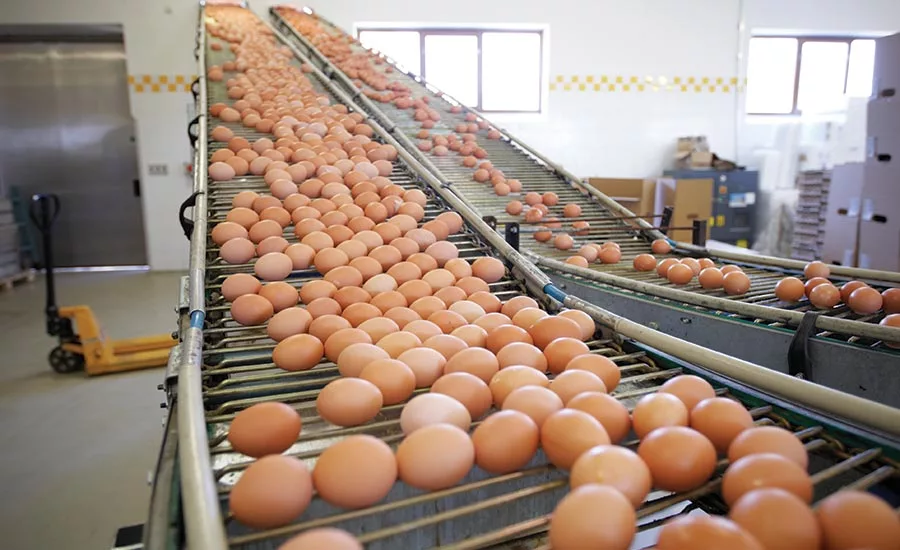
Shell egg producers have done environmental sampling longer than most food processors, and the industry has seen declines in Salmonella enteritidis.
Photo courtesy of Getty Images
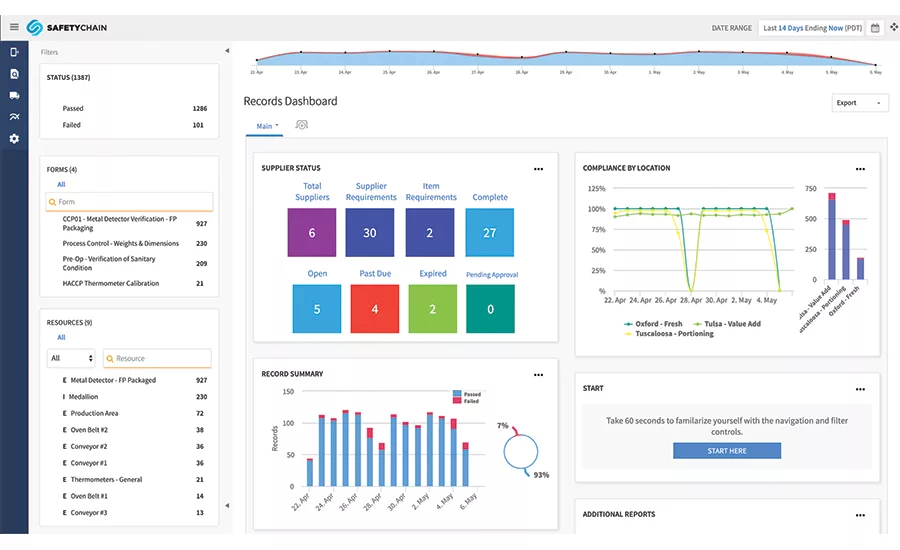
Instead of employees camping out in a conference room for a couple weeks ahead of an inspection to prepare paper documents, SafetyChain software presents a clear view of whatever data is needed, requiring just a few keystrokes, President Brian Sharp says.
Photo courtesy of SafetyChain
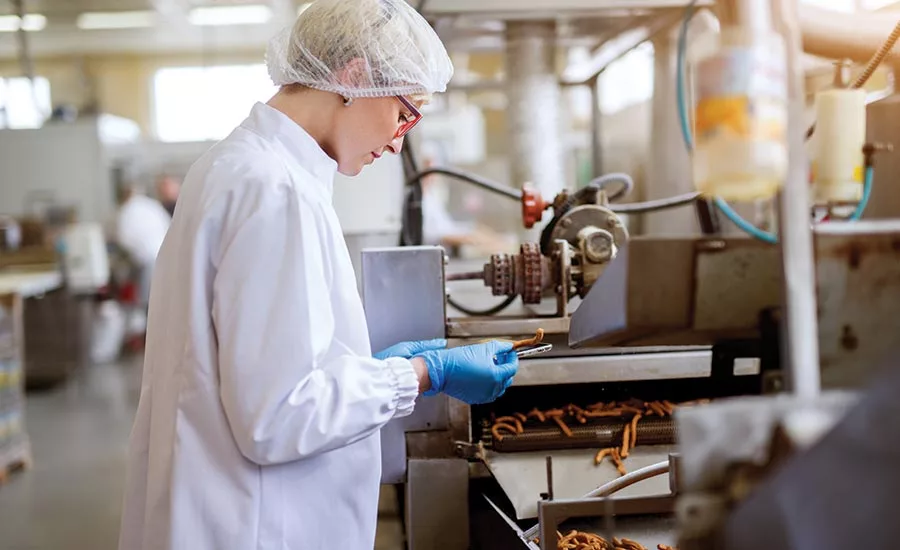
Even if your facility has strong bacterial testing results and has operated for decades without making people sick, the business still can do more to improve safety, document the results to share with inspectors and avoid a potential recall.
Photo courtesy of Getty Images
The methods for documenting control of hazards have increased due to more complex regulations and technology advances. All the additional bacterial tests, external audits and sensor measurements come with a load of new data.
Those facts and figures can make the difference between a recall and persuading an inspector that a product is safe. If a question about a positive swab arises, think how much weight that favorable finished-product test results would carry or how helpful an aggressive record of clean environmental sampling would be.
Article Index:
Many processors have grown more sophisticated at compiling the information and presenting it when inspectors ask for proof that a facility’s food safety management system is working. They use software tools that can pull up any record they need for an inspector or auditor with a few taps on a tablet or computer. Sadly, other plants still pull out paper files for inspections.
But no matter the companies’ size or record management methods, they likely experience some of the common deficiencies that experts see.
Shawn Stevens, founder of Food Industry Counsel, says he’s learned in his legal work and safety consulting that companies’ food safety management systems vary wildly across businesses of all sizes.
Before FSMA, “companies were pretty much left to their own devices” to develop what they believed to be good safety systems, he notes. Some companies followed just GMPs, and others would combine GMPs with other prerequisite programs, but the guidelines for a safe operation covered only the basics, such as employee hygiene and sanitary equipment.
The law at the time did not require comprehensive, written plans for food safety, recalls and food defense, for example. “To the extent that companies did have these programs, there wasn’t any standard bar for everybody to follow. The rules of the road, so to speak, were just the Wild West,” he says. “Now that’s beginning to crystallize in that the FDA has spelled out exactly what it wants to see when it shows up in these facilities.”
Looking for quick answers on food safety topics?
Try Ask FSM, our new smart AI search tool.
Ask FSM →
Software to manage safety records, abundant in choices today, mostly didn’t exist before regulations became more complex. The mindset of filling more file folders and bankers’ boxes with paper records persists, Stevens says, though he thinks most companies are doing OK at documenting food safety with the record-keeping systems that they’re used to, which could include internal software that individual processors created.
Electronic tools for proof
SafetyChain cloud-based software company works with many large processors that made their own data management tools internally 10 to 15 years ago, and now, they’re struggling to maintain the functionality and want to shed the cost of maintenance. “Their line to us is usually: ‘We want to get out of the software business; we’re in the food business,’” SafetyChain President Brian Sharp says.
The vast majority of smaller processors that SafetyChain works with are converting from records tracked on clipboards and kept in filing cabinets, he says. “For a lot of them, it’s really just about getting off of paper because they’re trying to keep up with this fast-changing, complex environment that’s not getting any easier, and they’re not getting any more help.”
Oscar Garrison, senior vice president of food safety regulatory affairs for United Egg Producers, says the shell egg industry has similar variation of paper record keeping versus more advanced software solutions. He likes to learn about the different data management products at the annual Food Safety Summit in Chicago and notes that the amount of resources that small operations have for data collection are significantly different from those for large businesses.
“Somehow, we’ve got to encourage some of these companies to maintain a platform that is easy for the user to utilize, gives them the data they need and still be not too much of a financial burden, so it can be an affordable process,” he says.
Roger Woehl, chief technical officer of SafetyChain, says the market has reached that point. SafetyChain offers a solution that 10 to 20 years ago would have cost millions of dollars, but now, the software is practical for small and medium-sized companies, he says.
“Quite frankly, the functionality has got to the point where the small guys [and] the medium guys have more functionality than the big guys have with their own [software] that they built from scratch years ago,” he says.
When he started working in the food industry, he thought processors must be “old school” and simply lagged behind other fields in adopting cloud-based software to manage data, but he came to realize that food production is technically demanding, with thin margins and challenging work environments, and it needs mobile capabilities for tracking and monitoring.
Solutions used 20 years ago in the pharmaceutical industry, for example, didn’t make economic sense in the food business, but now, the technology has caught up to the industry’s need for a cloud-based system to manage the emerging trends of big data, IIoT and mobile use.
And the industry clearly needs technology badly to manage complex operations with growing safety requirements. “It’s so gratifying when you go into a company, and you deliver it, and you see that you just made everybody’s life easier or more efficient,” Woehl says.
Change motivators
Companies often are driven initially to seek help with safety data management because they want to improve their environmental testing program or because they have “the fear of FSMA,” as Sharp puts it, worrying about keeping up with complicated requirements.
“If you’ve seen the code, it’s a handful,” Sharp says. However, SafetyChain tied that code to the digital forms in the software, connecting the data directly to the regulation.
“So if an auditor were to come in, it’s not just finding the paper you did; it’s being able to show what it [the record] satisfies, who satisfied it, when they satisfied it. Was there an issue? Here’s a picture of the issue. Here’s what we did to correct the issue—all in one digital record, which is really, you could say, helping them sleep at night,” Sharp says.
And while FSMA remains important, some processors must prove themselves in so many audits—weekly in some cases for GFSI, organic, SQF, customers, etc.—that SafetyChain’s conversations with clients are often about going “beyond compliance,” Woehl says.
How it’s done with eggs
Egg producers have been doing environmental sampling longer than most food processors, Garrison says. That’s because the FDA’s Egg Safety Rule has required monitoring and documentation since 2010. Its extensive safety requirements include procuring chicks from flocks that test negative for Salmonella enteritidis, establishing an environmental monitoring program and meeting controls for biosecurity and vectors.
“That was very cutting edge,” Garrison says of the environmental monitoring mandate. And because of the rule, the FDA and the industry have seen declines in the amount of Salmonella enteritidis they’re isolating from the environment, he says.
Poultry houses are swabbed for Salmonella enteritidis at established intervals in the litter on the floor or on the belts in belted houses. “That’s kind of been our preventive controls, particularly on the live processing side, for years,” Garrison says.
Plus, shell eggs are packed under inspection by the USDA’s Agricultural Marketing Service and with strict sanitation requirements.
Even though the industry’s rules differ somewhat from those for packaged food, the safety concepts are the same. “There’s a very rigid food safety program around the production of the eggs in this country,” Garrison says.
One safety concern in the industry is the appearance in recent years of two emerging strains of Salmonella in outbreaks, detected with whole genome sequencing traceback, Garrison says. “Any time we see an emerging pathogen like that show its face where it really hasn’t been shown before, that’s when we start engaging our partners,” he says.
Working with the USDA Agricultural Research Service and academic experts, the industry is trying to determine whether the strains made simple “one-off” appearances or there’s wider concern.
More pathogens than you think
The food industry is discovering “that microorganisms are more prevalent and persistent than we allowed ourselves to believe,” says Stevens of Food Industry Counsel. This realization is the biggest driver of change, he says, leading to FDA swabathons that are regularly unearthing contamination that gets linked to illnesses that have occurred over long periods of time.
“Food companies are still struggling to catch up with the concept that our ability to detect pathogens is vastly outpacing our ability to eliminate them,” he says.
People in some facilities think that they don’t have anything to worry about because they’ve never had a positive pathogen test and believe they always wipe out Listeria in the plant.
“We still have the mindset that we’ve been doing it this way for 20, 30, 40 years, and we’ve never made anybody sick. We’ve never had a problem. And now, don’t tell us to change.”
But companies that believe they’re invincible are probably the most worrisome, he says. “In reality, they probably have made people sick, they probably have had problems, just nobody discovered it. And they absolutely need to change.”
But “company, after company, after company,” including ones operating without problems for 40 years, are sent into crisis with recalls for pathogens, threatening to shut down businesses, he says. “Suddenly, everyone sits up straight in their chairs and looks around and says, ‘Oh my goodness, I had no idea.’”
Invest in improving food safety, even if the ROI doesn’t seem clear and when market share is strong, customers are happy and the company doesn’t have a history of finding pathogens, he advises. “Investing $100,000 today can save your company a million or $10 million six months from now.”
After all, in the last few years, the Department of Justice and the FDA have been using criminal sanctions to punish executives for food products that make people sick, if they failed to take action about a condition that could cause illness.
More testing, more data
Robust environmental testing to root out lurking pathogens requires extensive documentation to show inspectors.
If a company finds Listeria in a drain, a corrective action that falls short might be to clean the drain, sanitize vigorously, retrain the employee on drain cleaning and then resume production, Stevens explains. And if the drain tests positive again three weeks later, the company should not simply “copy and paste” its last corrective action report.
Eventually, the facility might end up with, say, a dozen such reports over a year and half. The reports “all say the same thing: ‘It’s obvious I’m not taking this seriously, and I’m just going through the motions,’” Stevens says.
Instead, a facility could respond to Listeria in a drain with extensive extra sampling of the entire area surrounding the drain, including under equipment, on walls and in cracks. “Listeria can’t be in the drain unless it came from somewhere.”
Instead of worrying about how the employee cleaned the drain, start with the idea that the Listeria shouldn’t be there and ask how you can find it and eliminate it.
One technology Stevens advocates for and that companies are starting to use more is strain typing for positive samples taken over a period of months to help determine whether they are related with the same DNA signature. If so, facilities can examine whether the pathogens are coming in on ingredients or perhaps living in the environment and occasionally creeping out.
“The ROI is you’re going to find out if you have a harborage, and you’re going to be able to get rid of it,” he says. “It’s going to cost you a ton of money upfront. But once it’s gone, it’s never going to contaminate your products, it’s never going to cause a recall, it’s never going to cause an outbreak, and by the way, you’ll probably never go to jail.”
To manage the testing, Stevens says to get rid of spreadsheets and use software that will randomly select sampling sites and map trends in the environment to show when bacteria levels increase, prompting action. “The processing room floor is like a battlefield.”
With FDA inspections, Stevens describes two scenarios of how companies can provide proof:
- For a routine inspection, inspectors may ask to see the food safety plan, the monitoring documents, the sanitation results and the microbiological testing records. The inspectors will decide for themselves whether a facility’s safety program is adequate.
- If inspectors sample one day and find, say, 10 positive samples near a food contact surface, they might say something like: “We have a big concern about this RTE deli salad produced adjacent to several spots that tested positive.” The inspectors typically would ask the facility to explain what it will do with the product.
“What they’re really saying is: ‘Prove to us that your systems are working and your product is safe,’” Stevens says.
Companies could respond by sharing data from negative environmental testing in the area, finished-product testing and post-sanitation checks. Then, the processor could examine footage from security cameras on the floor to determine whether a failure occurred in sanitation or employee hygiene, which would indicate that the contamination is the result of a one-time failure instead of a routine problem.
Processors need to be able to back up why there isn’t a safety issue and why they don’t need to recall a product. When that proof is stored digitally, printing out a report is a simple way to show that safety measures look good across the board. The goal is to make a case to inspectors that “your positive [pathogen] finding isn’t sufficient to overcome the data that we have,” Stevens says.
Another area where software can help is with providing a simple way to collect information that still must be recorded by hand, Woehl of SafetyChain notes. While companies are using sensors to collect more data that needs to be warehoused, automated solutions can’t record actions such as completing a required calibration or recording that fruit is bruised, he says.
Here are some examples from SafetyChain of how its software provides an extra layer of evidence, managing IIOT data and information input by workers:
- On the floor or in the field, data can be collected with a mobile barcode scanner, at a computer workstation or through a tablet with customized forms that include drop-down menus or fields for keying in answers. Photos can be added.
- Data is timestamped and validated immediately based on targets and acceptable ranges.
- If there’s a problem, the appropriate people are notified, so a correction can be started right away.
- When auditors come, staff can show them the specific elements of the plant’s safety program through the software.
- If an auditor asks to see what happened on a line or with a lot on a specific day, staff can quickly pull up all the related forms and programs.
- When an inspector requests an example of a correction, the software produces records about how the plant reacted to an out-of-spec incident, for example.
- If an SQF auditor says: “Show me how you’re satisfying a specific part of the program,” the staff can offer related forms, the SOP and examples of supporting data.
Inspectors’ demands
When the evidence is laid out clearly for an auditor or inspector, that transparency helps give the impression that this team is on top of things. “You can handle it from any angle they come at you with literally a couple of keystrokes,” says Sharp of SafetyChain.
Woehl contrasts that to preparing for an audit without software: People start prepping a couple weeks before, carrying binders and boxes of paperwork to a conference room to spread it out to make sure nothing is missing and that all documents are signed as needed. Software data collection eliminates the questions like: Do we have everything? Are our records complete? What if we can’t find a record the auditor asks for?
Len Steed, manager of HACCP and quality assurance for North America at AIB International, is a proponent of companies establishing a risk-based internal audit because the government and GFSI have gone to risk-based controls and unannounced audits. AIB offers two products to help processors test their programs, enabling them to determine ahead of an inspection how they will interact with the FDA or the state.
With the FSMA Readiness Assessment, a consultation visit reviews whether your food safety plan is technically correct, while the FDA Preparedness Inspection reviews policies for handling inspections and determines whether people understand them.
Steed wrote the inspection program a few years ago and has completed about 70 reviews. “I’ve only done two plants that didn’t have any documentation errors.”
He says some companies fail to:
- Revise employee training to reflect updated GMPs for human and animal food, so workers likely aren’t adequately addressing cross-contact. (The concept is addressed 47 times in the newer requirements.)
- Use available materials to train four levels of safety staff: preventive control qualified individuals, preventive control operators, the qualified supervisor overseeing the operators’ work and the qualified internal auditor. (Specifically, companies can use the FDA’s recognized course through the Food Safety Preventive Controls Alliance.) “The FDA has gone on record saying that they’re going to judge the effectiveness of your training and implementation,” Steed notes.
- Fill out forms properly and frequently enough, and ensure they’re signed by supervisors.
- Thoroughly document how a deviation in a critical control point was handled.
- Do environmental testing during the plant’s dirtiest times, instead of just after sanitation.
- Ensure that employees understand the CIP systems that might be handled by an outside contractor, a particular problem in the beverage industry. If the inspector asks a question about the CIP system, and the PCQI has to go to a contractor to get information about the calibration, flow rate, run times and temperature levels, that does not inspire confidence.
“If you had too many of these mistakes, that would probably send the wrong message to the regulator,” Steed says. “You’re going to be judged with regards to effective implementation on two things: Is your documentation correct and filled out properly? And do you have examples of corrections?”
For more information:
AIB International,
www.aibonline.org
Food Industry Counsel,
www.foodindustrycounsel.com
Naturipe Farms,
www.naturipefarms.com
SafetyChain,
www.safetychain.com
United Egg,
www.unitedegg.com
At the same time, he says staff members generally do a good job overall. “I don’t want to give you the impression that the sky is falling, and nobody knows what they’re doing, because that’s not true.”
Simply getting the word out to everyone that documentation is critically important for inspection will help, Steed says. Also, have a plan to present that information to inspectors to show how food safety is continuously improving.
“The best way to do it: You want to be honest, straightforward. You want to show examples of things that weren’t quite right and how you investigated them to improve,” he says.






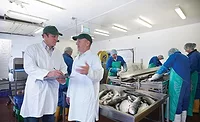
.webp?t=1721343192)

